Cambodia: Bamboo Railways Give Way to Iron Silk Road
A new regional railway brings hope for growth to Cambodians, and reminds older Cambodians of prosperous times before recent decades of conflict.
Developing transport infrastructure in tandem with policies and procedures for crossing borders and promoting trade has been central to efforts to interconnect the Greater Mekong Subregion countries.
The Subregional Transport Forum reviews, coordinates and monitors regional transport plans and projects of GMS member countries.
Transport lies at the heart of Greater Mekong Subregion cooperation. The development of physical infrastructure, such as roads and bridges, in tandem with policies and procedures for crossing borders and developing trade along key routes, has been central to efforts to forge a truly interconnected subregion.
Physically connecting the countries of the subregion was one of the first initiatives of the GMS program when it was founded in 1992. The countries of the Greater Mekong Subregion have acknowledged that in order to cooperate in trade, tourism, and investment, and to realize the other benefits of the region, they must expand the road links and border crossings that connect them.
This is being done through the development of “economic corridors,” which are geographic areas, often along major highways, where a variety of development projects are undertaken to maximize their development benefits. This might include projects involving infrastructure, laws and regulations, market development, and the improvement of urban centers. Economic corridors bring a wide range of benefits, far beyond what single projects deliver in terms of development impact.
The three main GMS corridors—the East–West, North–South and Southern economic corridors—have improved the lives of millions of people in the Greater Mekong Subregion. These corridors are being enhanced with secondary roads that extend their benefits to nearby communities most in need, and other roads that link to strategic seaports in the subregion. The regulatory details of how people and goods can best move along these corridors are also currently being worked out.
The GMS Economic Cooperation Program Strategic Framework 2030 (GMS-2030) will prioritize intermodal approaches, facilitate cross-border transport, and seek improvement in logistics, asset management, and road safety. Given the rise in GMS economic density, and with respect to its environmental considerations, GMS-2030 aims to ensure the development of railway networks; sea, river, and dry ports; and inland waterways. Investments in airports to improve connections with the rest of Asia and the world will be essential, as will the development of secondary roads that will link to main corridors to expand the benefits to poorer communities. An effort will be made to integrate urban transport with the GMS transport network. GMS-2030 was endorsed and adopted at the 7th GMS Summit of Leaders in September 2021. It aims to provide a new setting for the development of this subregion for the next decade.
Related
• GMS Transport Sector Strategy 2030
• GMS Transport Strategy 2006–2015
Focal Persons at the Asian Development Bank
• Mohammad Nazrul Islam
• Senior Transport Specialist
Dong Kyu Lee
Director
SG-TRA
Hiraoki Yamaguchi
Senior Director
SG-TRA
Other Concerned Staff & Consultants
Antonio Ressano
Regional Cooperation and Integration Unit
Southeast Asia Department
Lucia Martin Casanueva
Regional Cooperation and Integration Unit
Southeast Asia Department/GMS Secretariat
Send inquiries to GMS Secretariat.
A new regional railway brings hope for growth to Cambodians, and reminds older Cambodians of prosperous times before recent decades of conflict.
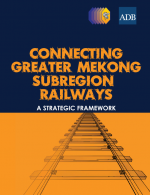
This strategic framework develops a practical approach to railway integration in the Greater Mekong Subregion, provides GMS countries with an initial framework for achieving integration and interoperability, identifies priority initiatives, builds a platform for further dialogue and discussion between and among GMS countries, and provides a context for evaluating future projects.

The upgrade of Route 3 of the Northern Economic Corridor has not only improved connectivity and mobility but also has introduced potential health challenges.

Against the backdrop of growing momentum for regional cooperation and integration (RCI) in Asia, this paper examines the link between regional roads and Asian Development Bank (ADB) support between 1966 and 2008.
The novel methodology used in this paper includes an Asia-wide definition of regional roads that fall on the Asian Highway (AH) network. The AH network is a system of about 140,000 kilometers (km) of standardized roads crisscrossing many Asian countries and with linkages to Europe.
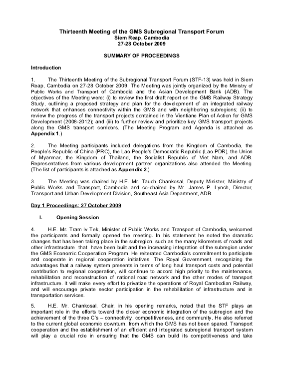
The Thirteenth Meeting of the Subregional Transport Forum (STF-13) was held in Siem Reap, Cambodia on 27-28 October 2009. The Meeting was jointly organized by the Ministry of Public Works and Transport of Cambodia and the Asian Development Bank (ADB).
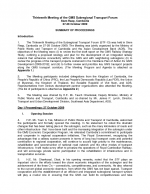
The Thirteenth Meeting of the Subregional Transport Forum (STF-13) was held in Siem Reap, Cambodia on 27-28 October 2009. The Meeting was jointly organized by the Ministry of Public Works and Transport of Cambodia and the Asian Development Bank (ADB).
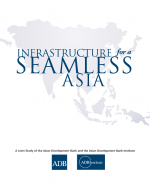
Flagship study that analyzes major challenges in developing regional infrastructure, particularly transport and energy through regional cooperation towards a seamless Asia.
The Twelfth Meeting of the Subregional Transport Forum (STF-12) was held in Da Nang City, Viet Nam on 12-14 August 2008. The Meeting was jointly organized by the Ministry of Transport of Viet Nam and the Asian Development Bank (ADB). The objective of the Meeting was to discuss recent developments, key issues, and future plans in the GMS transport sector, with particular focus on maximizing the development impact of the network and on the problems that remain as regards the conduct of transport and trade operations along the GMS economic corridors and possible ways of addressing them.
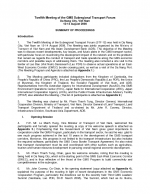
The Twelfth Meeting of the Subregional Transport Forum (STF-12) was held in Da Nang City, Viet Nam on 12-14 August 2008. The Meeting was jointly organized by the Ministry of Transport of Viet Nam and the Asian Development Bank (ADB). The objective of the Meeting was to discuss recent developments, key issues, and future plans in the GMS transport sector, with particular focus on maximizing the development impact of the network and on the problems that remain as regards the conduct of transport and trade operations along the GMS economic corridors and possible ways of addressing them.

The transport sector is critical to economic cooperation among the countries of the Greater Mekong Subregion (GMS). Soon after its inception in 1992, the GMS Economic Cooperation Program developed a GMS Transport Master Plan (1995) to encourage commercial exchange among the countries to spur development, generate employment opportunities, and assist GMS countries’ programs to reduce poverty. The Transport Master Plan served well to develop the economic corridors that are the foundation of the GMS Program.